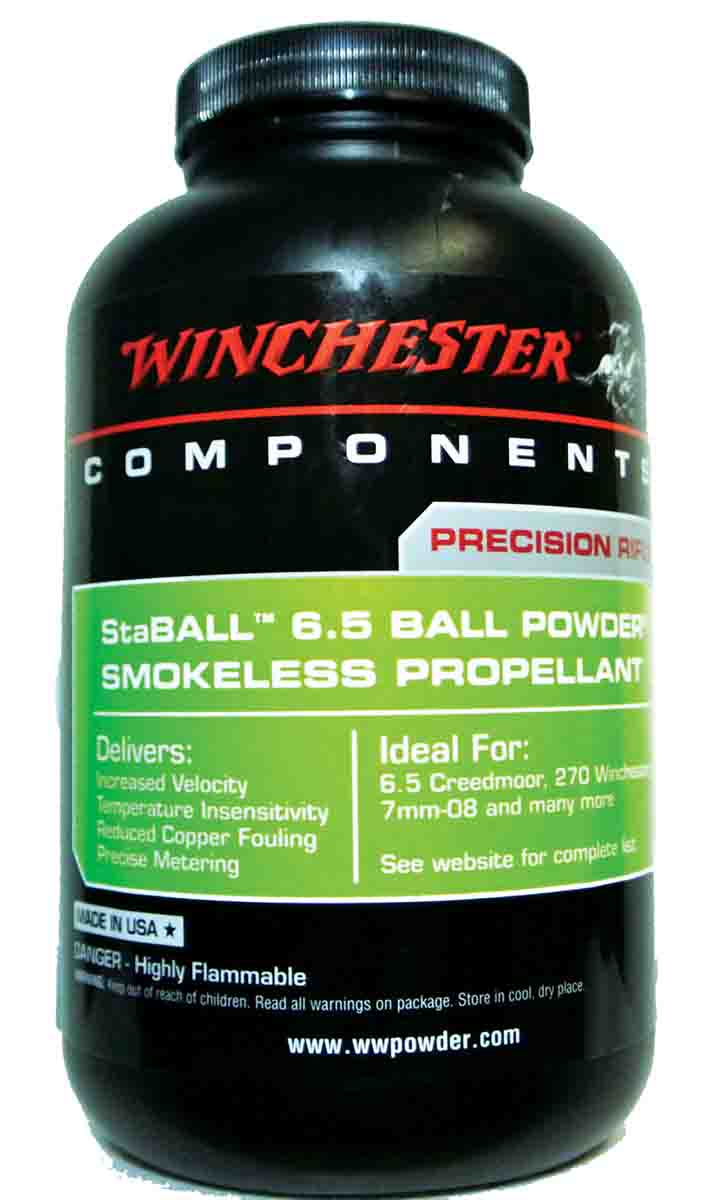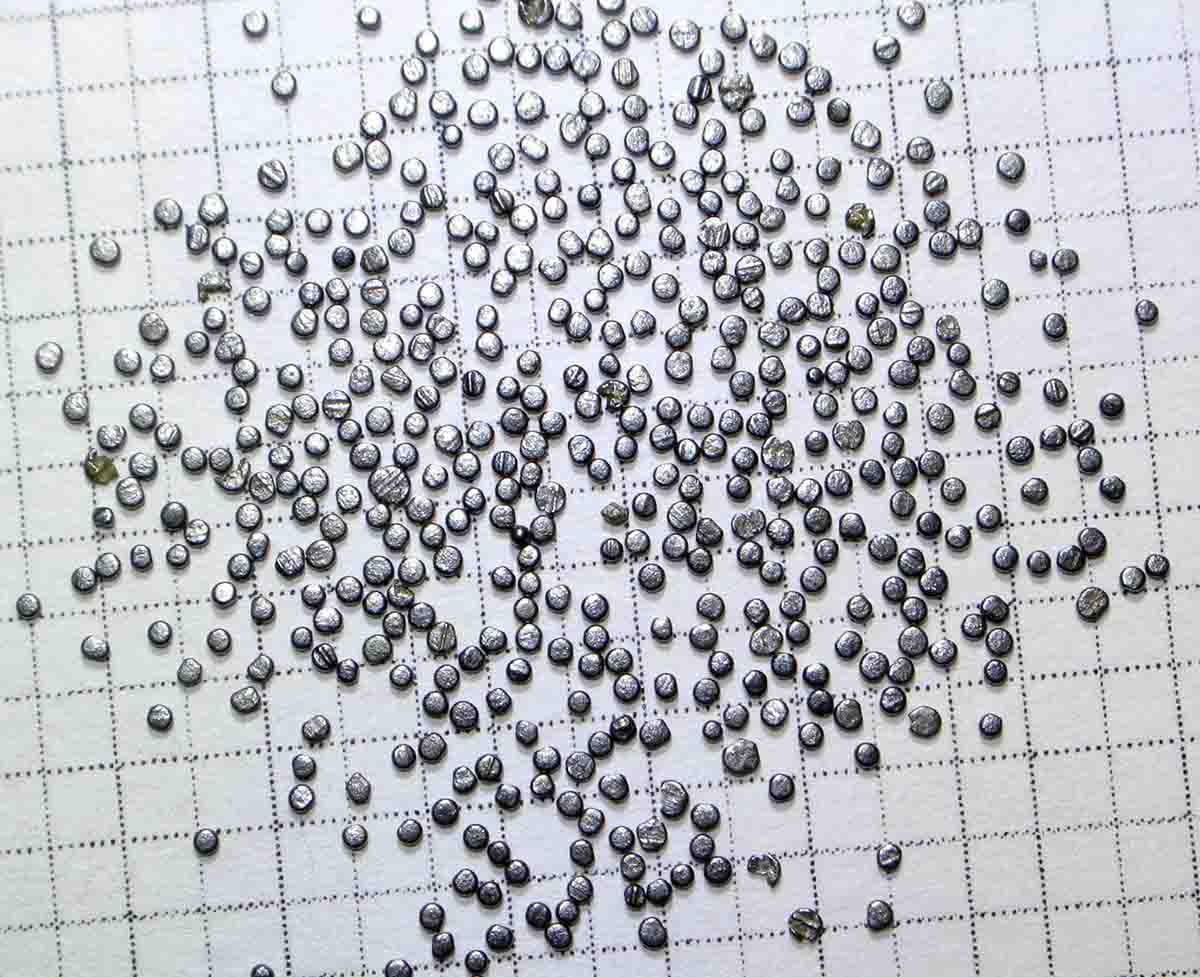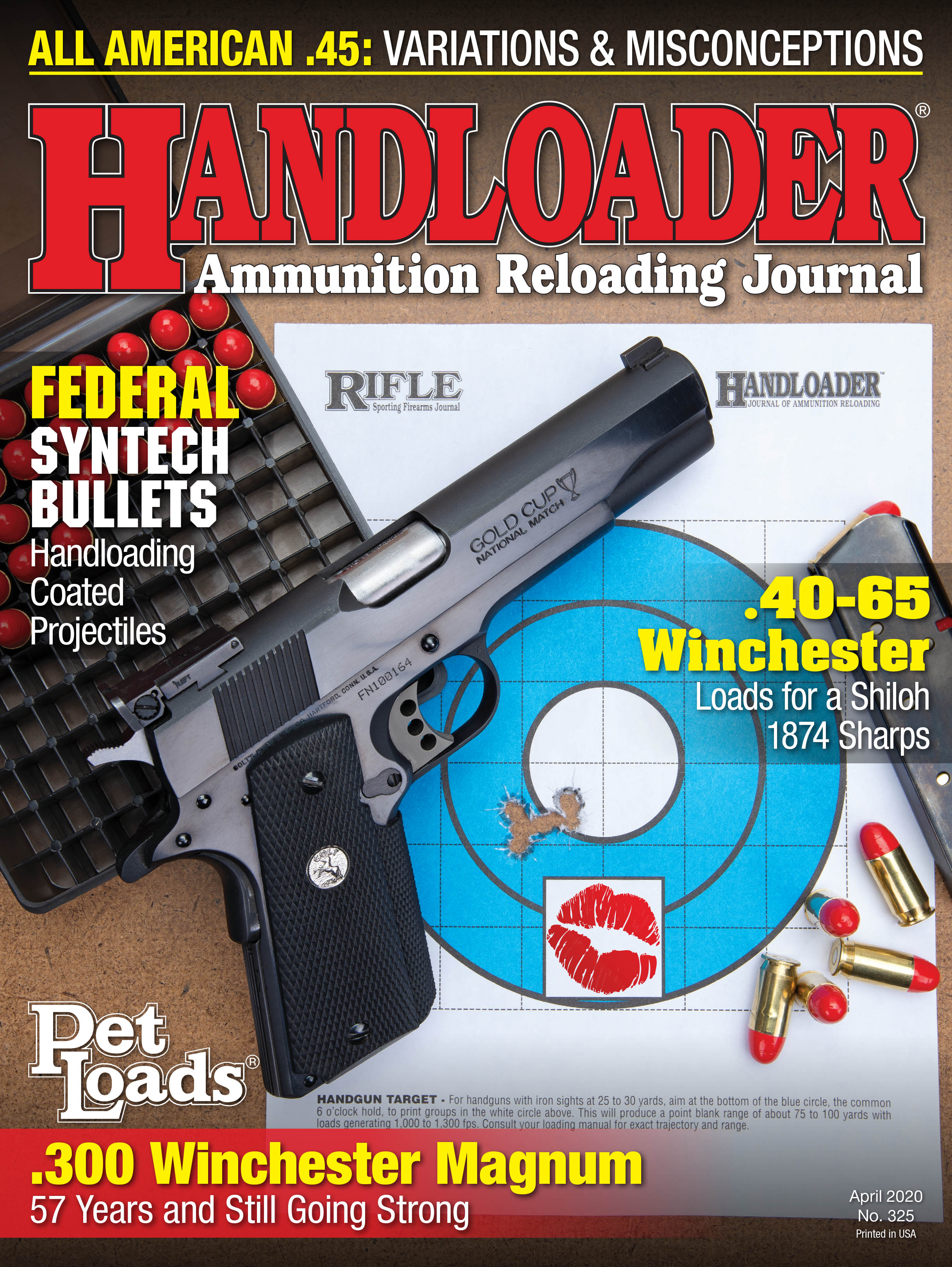Propellant Profiles
Winchester StaBALL 6.5
column By: Rob Behr | April, 20


Like many spherical powders manufactured by Saint Marks Powder in Florida, StaBALL 6.5 uses a laminated geometry, where the powder grains are slightly flattened rather than perfectly round. Measuring a few grains produced an average size of .037x.020 inch. This geometry is part of a trend in spherical propellants that helps promote temperature stability. This newer geometry combined with more advanced deterrent processes is part of the alchemy that makes StaBALL 6.5 possible.
StaBALL 6.5 is double based, using both nitrocellulose and nitroglycerin as energetic compounds. While nitroglycerine adds substantially to a propellant’s energy per grain, it tends to develop increased pressure when ignited at colder temperatures. Designing a powder that balances the pressure dynamics of nitrocellulose and nitroglycerine at both temperature extremes is an impressive manufacturing feat.
To test this new powder, I needed several exotic scientific devices. A trip to the hardware store produced a freezer thermometer and a heating pad. I loaded five 6.5 Creedmoor cartridges with 43.5 grains of StaBALL 6.5 on top of a Federal 215M primer pushing a Berger 140-grain VLD Hunting bullet. They went into the small Yeti cooler with the lid open and then into my nearly empty chest freezer cranked to its lowest setting. Thanks to my new scientific device, I now know that my freezer set in this manner produces a nippy minus 22 degrees Fahrenheit. I left them in the freezer overnight and into the next day.
In the morning, a second five round batch of 6.5 Creedmoor was put into another cooler along with a heating pad and another thermometer. They spent six hours in the cooler insulated with a thick towel. The thermometer read slightly more than 100 degrees when I closed the lid and loaded it into my Jeep next to the frosty, blanket covered Yeti.
I’m not pretending that this test was anything other than crude, but the model itself seems realistic. A box of ammunition left in a truck overnight where I live in Montana could easily reach temperatures of 20 below. Conversely, I would expect to find ammunition that had been heated to 100 degrees during an afternoon’s shooting in the dead of summer.
The shooting regime was simple and quick. Open the frozen cooler, dig out a cartridge and get it shut again. Shoot as quickly as possible and then clear the chamber to allow it to cool. Ambient temperature was 58 degrees and the shooting went quickly. The five frozen cartridges averaged 2,654 fps with an extreme spread of 16 fps out of a Ruger Precision Rifle. The warmed cartridges were shot in a similar fashion; load quickly, shoot and then allow the barrel to cool. The average of the five warmed cartridges was 2,658 with an extreme spread of 38 fps. Flawed as this testing system may have been, there is no way to get around the result. A 4-fps shift with components that were about 120 degrees apart is impressive performance for any powder. It is jaw-dropping for a double base spherical.
Hodgdon’s online Reloading Data Center has loads for 18 cartridges using StaBALL 6.5. Based on the charges and published velocities, StaBALL 6.5 has a burn rate slower than H-4350 and faster than H-4831, somewhere near Hybrid 100V. This very useful range fills the bill for a number of popular hunting and competition cartridges. The provided data covers benchrest winners including the 6mm Dasher, up and comers like the 6mm Creedmoor and a surprising old favorite, the .375 H&H Magnum.
My BRNO ZKK 602 .375 H&H is everything you could hope for in a dangerous-game rifle, although it has never faced anything more frightening than mule deer. Using 80 grains of StaBALL 6.5 and Hornady 270-grain InterLock bullets, it produced an average velocity of 2,599 fps from its 25-inch barrel. I’m sure there was more velocity to be had there, but the groups looked fine and my shoulder voted to stop while I was ahead.
Where StaBALL 6.5 really stood out velocity-wise was in the .30-06. The published maximum velocity was 3,128 fps, an impressive number from a 24-inch barrel. I dropped the maximum back .5 grains and shot three groups using Sierra 150-grain GameKings. They went into a minute and a half at an average of 3,061 fps. Considering it was a different bullet than the one Hodgdon tested, the data seemed spot on.
I would have guessed that StaBALL 6.5 would be too slow to produce good ballistics, even with heavier bullets, in the .223 Remington, but there was published data. I tested the same compressed load in a 24-inch Bushmaster Varminter and a 7.5-inch AR-15 pistol. Using 26.5 grains of powder and a Sierra 77-grain bullet, the Bushmaster produced an average of 2,582 fps and the pistol averaged 1,873 fps.
Moving to a .22-250 Remington was a better fit for Winchester’s new powder. The Savage 110 Varmint with a 26-inch barrel took to StaBALL 6.5 like a duck to water. I went out of my way to press for accuracy from this rifle because it is the one that sees the most use in extreme environments. In the summer it spends hot days in the prairie dog fields and winters near a coyote call.
After moving up and down in charge mass, I settled onto a load of 41 grains of StaBALL 6.5 and a Sierra 55-grain SBT at an average of 3,688 fps. Groups were consistent at a bit over half a minute of angle, which is pretty good accuracy from my rifle’s worn throat. Someday I will re-barrel it and start fresh, but the loads I develop for the new barrel will still use StaBALL 6.5.



.jpg)